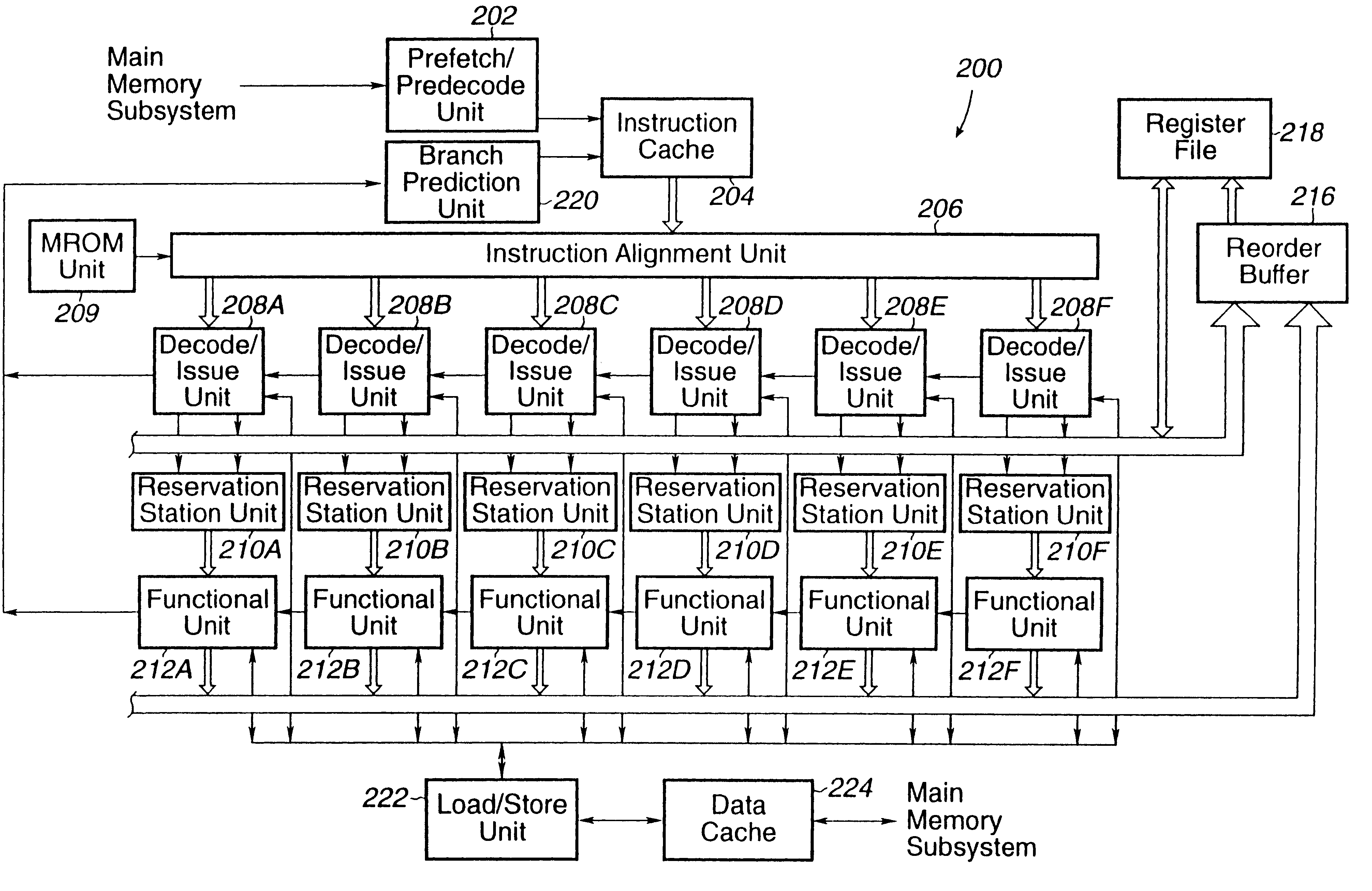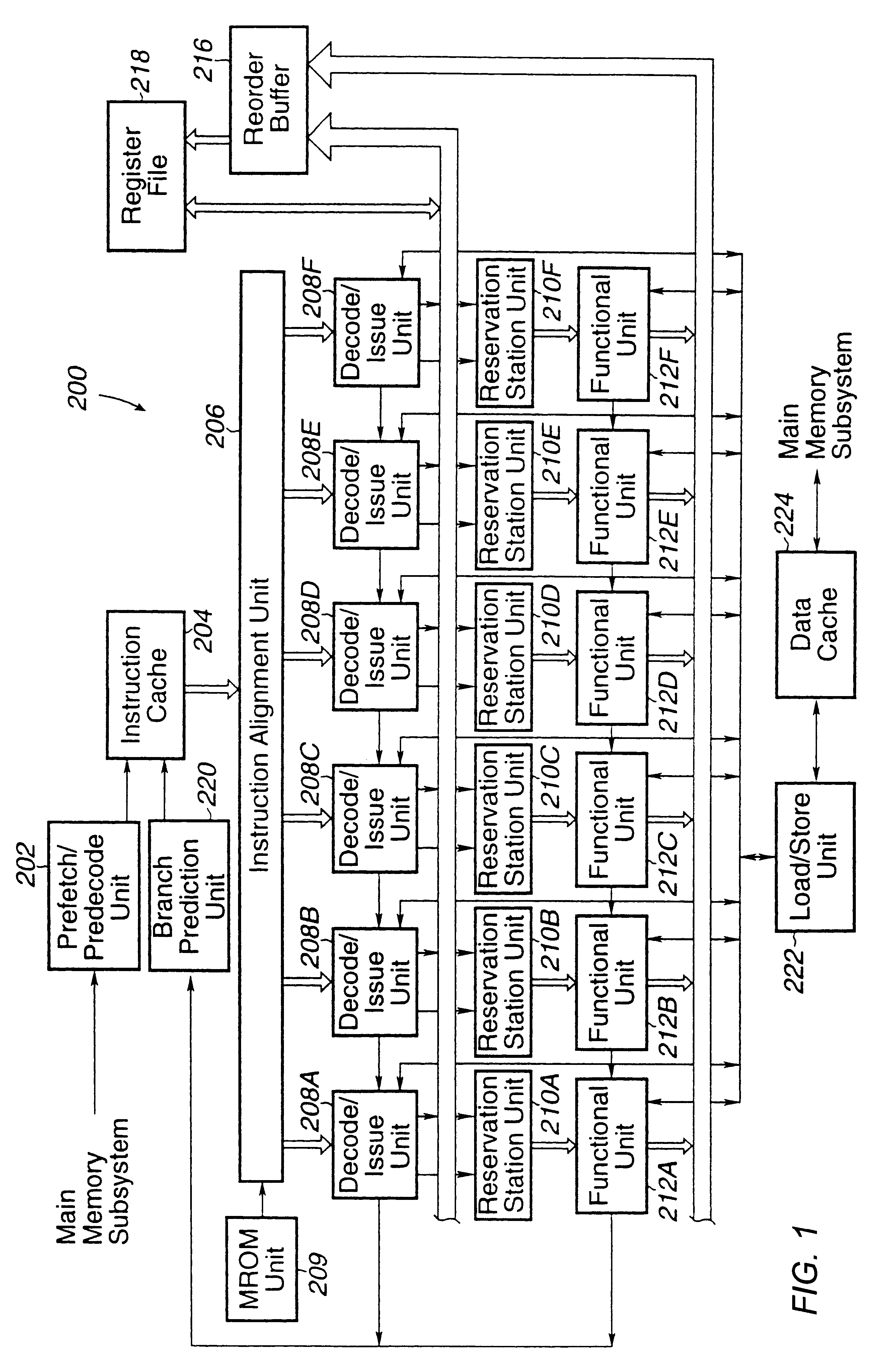Data address prediction structure and a method for operating the same
- Summary
- Abstract
- Description
- Claims
- Application Information
AI Technical Summary
Problems solved by technology
Method used
Image
Examples
example 1
Example 2
example 3
Example 4
ICALIGN Organization
The ICALIGN function includes multiplexers for instructions and pre-decode data from ICACHE arrays to decode units. There are two levels of multiplexers; the first level is controlled by the TAGHIT, and the second level is controlled by the aligned logic in the ICPDAT. The first level of multiplexing is implemented within the ICSTORE and ICPDAT block. This block includes latches and logic to breakup the line for next cycle in case all instructions cannot be dispatched in the same clock cycle. The encoder for the start-byte position is needed to generate the relative address of the PC to the decode units.
PUM
 Login to View More
Login to View More Abstract
Description
Claims
Application Information
 Login to View More
Login to View More - R&D
- Intellectual Property
- Life Sciences
- Materials
- Tech Scout
- Unparalleled Data Quality
- Higher Quality Content
- 60% Fewer Hallucinations
Browse by: Latest US Patents, China's latest patents, Technical Efficacy Thesaurus, Application Domain, Technology Topic, Popular Technical Reports.
© 2025 PatSnap. All rights reserved.Legal|Privacy policy|Modern Slavery Act Transparency Statement|Sitemap|About US| Contact US: help@patsnap.com



